Scary vision of all-out war between China and the US
With the rise of China’s military strength, US strategists are working hard to predict how a war would play out. And it doesn’t look good.
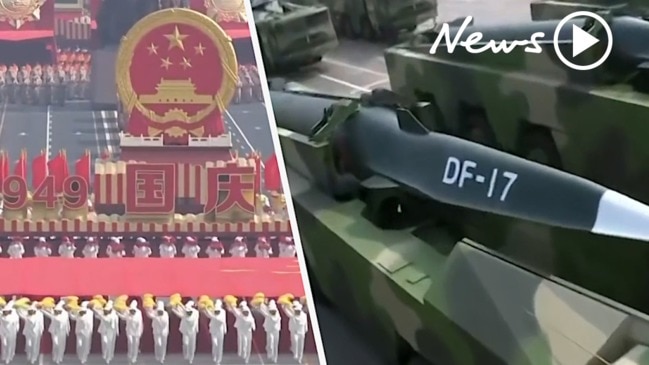
How does one think the unthinkable? What could lead to war in Asia? Who would win? Is there even such a thing as winning?
These questions are urgently being thrashed out in think tanks all around the world.
Retired US Admiral and head of Special Operations Command William McRaven warns the West has experienced a “holy sh*t” moment.
The US is suddenly no longer the world’s only military superpower. And, in some areas, China may even be ahead. “And oh, by the way, it’s just going to get harder as we get further into the future,” he warned an international affairs forum last month.
It’s already starting to do just that.
China’s new found confidence was demonstrated on Monday when its defence minister, Wei Fenghe, asserted that the assimilation of Taiwan was Beijing’s “greatest national interest” — and that no foreign force could prevent this “reunification”.
“Resolving the Taiwan question so as to realise China’s full reunification is the irresistible trend of the times, China’s greatest national interest, the righteous path to follow and the longing of all Chinese people,” he told an international security forum in Singapore.
Military analysts now believe it has the capacity to turn this dream into reality.
“China’s strategic position has strengthened to the point where it could now achieve a swift victory in key parts of the Western Pacific … before the US can effectively mobilise a response,” the University of Sydney’s United States Studies Centre warns.
For the first time in decades, Washington has to think the unthinkable:
“The US could lose,” warns retired admiral Gary Roughead, co-chair of a bipartisan review of the Trump administration’s defence strategy. “We really are at a significant inflection point in history.”
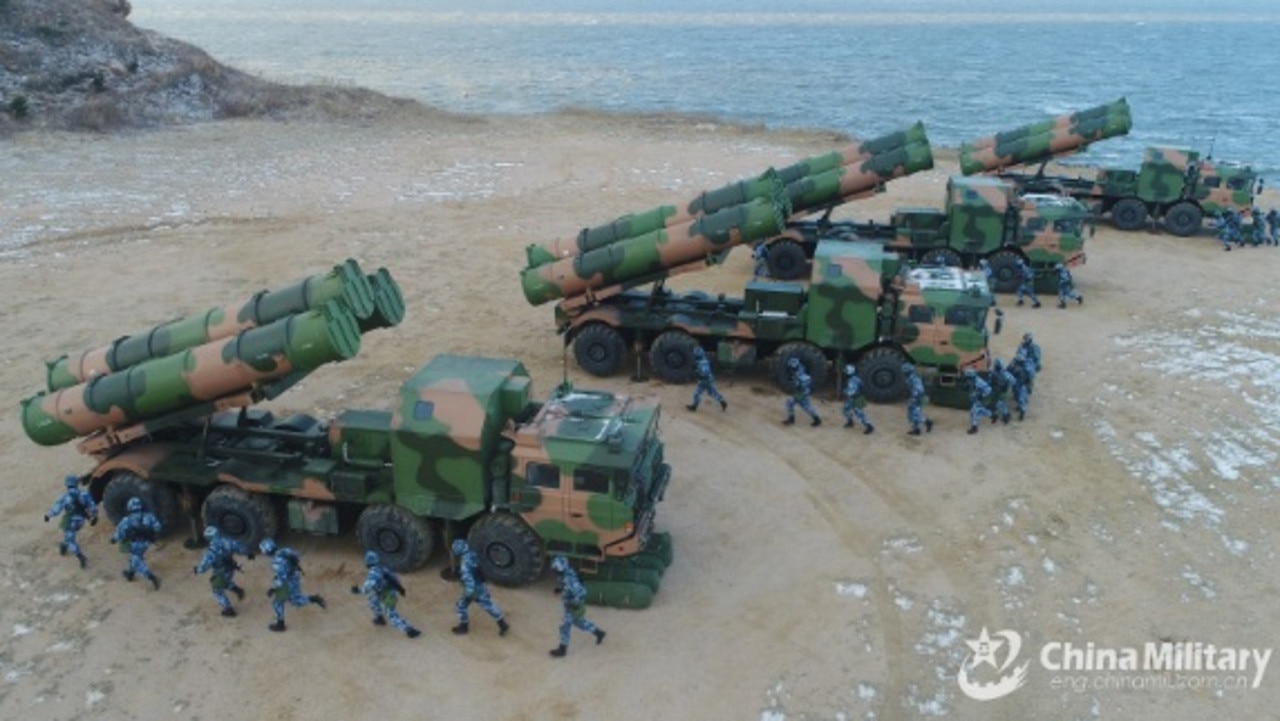
SOUNDING THE ALARM
A slew of reports all say the same thing.
Dr Robert Farley of the US Patterson School of Diplomacy has written in The National Interest that “preventing war will require tremendous skill and acumen from diplomats and policymakers”.
Earlier this year, the US Defence Department’s annual China Military report stated Beijing was intent on becoming “the pre-eminent power in the Indo-Pacific region”. It also noted China had more than 2000 missiles to back that claim up.
In November last year, the National Defence Strategy Commission warned: “The US military could suffer unacceptably high casualties” and “might struggle to win or perhaps lose, a war against China or Russia”.
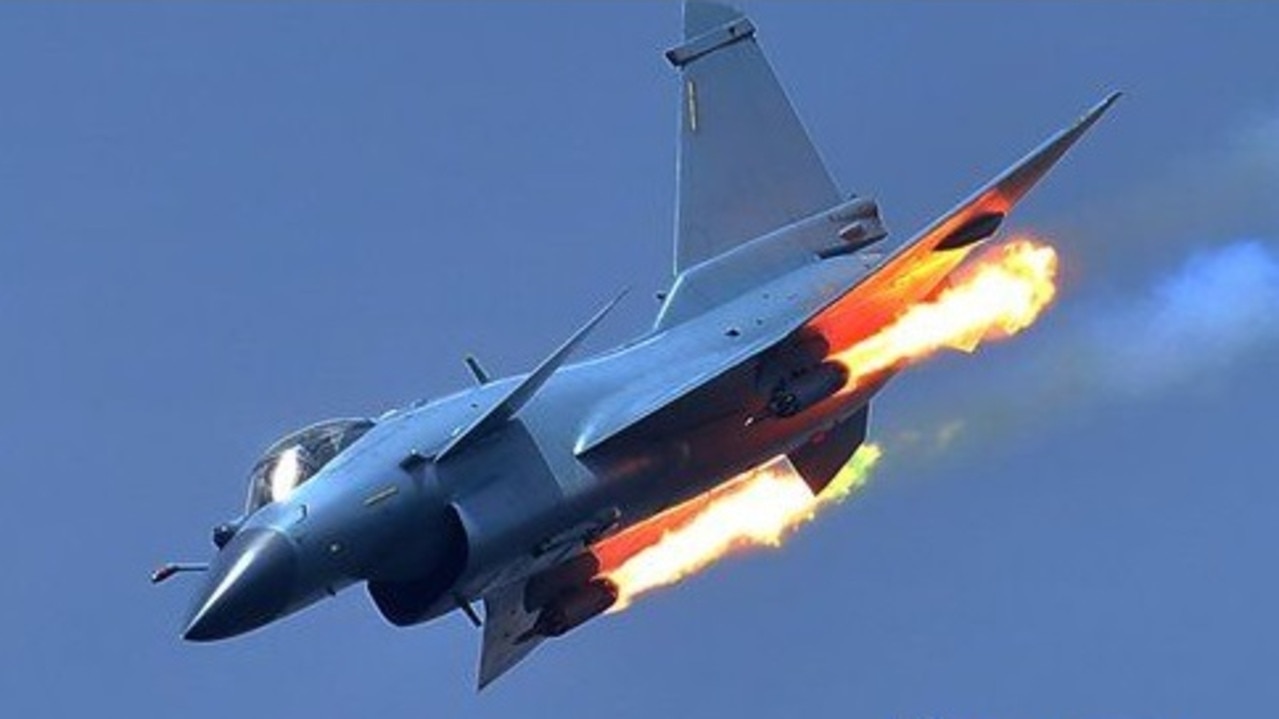
And the University of Sydney last month noted that the United States could ultimately consider it too costly to clash with China in aid of its allies.
Think tank war-games and analysis have comprehensively dispelled the idea that any such conflict in the Asia-Pacific would quick and certain. The pace and determination demonstrated in the modernisation of the People’s Liberation Army (PLA) has been so great that international analysts are asking the unthinkable:
WHO WOULD WIN?
Burning bases. Sinking ships. Mangled warplanes that never got into the air.
That’s the result of a string of simulated conflict scenarios.
“In our games, when we fight Russia and China,” says RAND analyst David Ochmanek, “blue gets its ass handed to it.”
“Things that rely on sophisticated base infrastructure like runways and fuel tanks are going to have a hard time. Things that sail on the surface of the sea are going to have a hard time,” Ochmanek told A New American Way of War conference earlier this year.
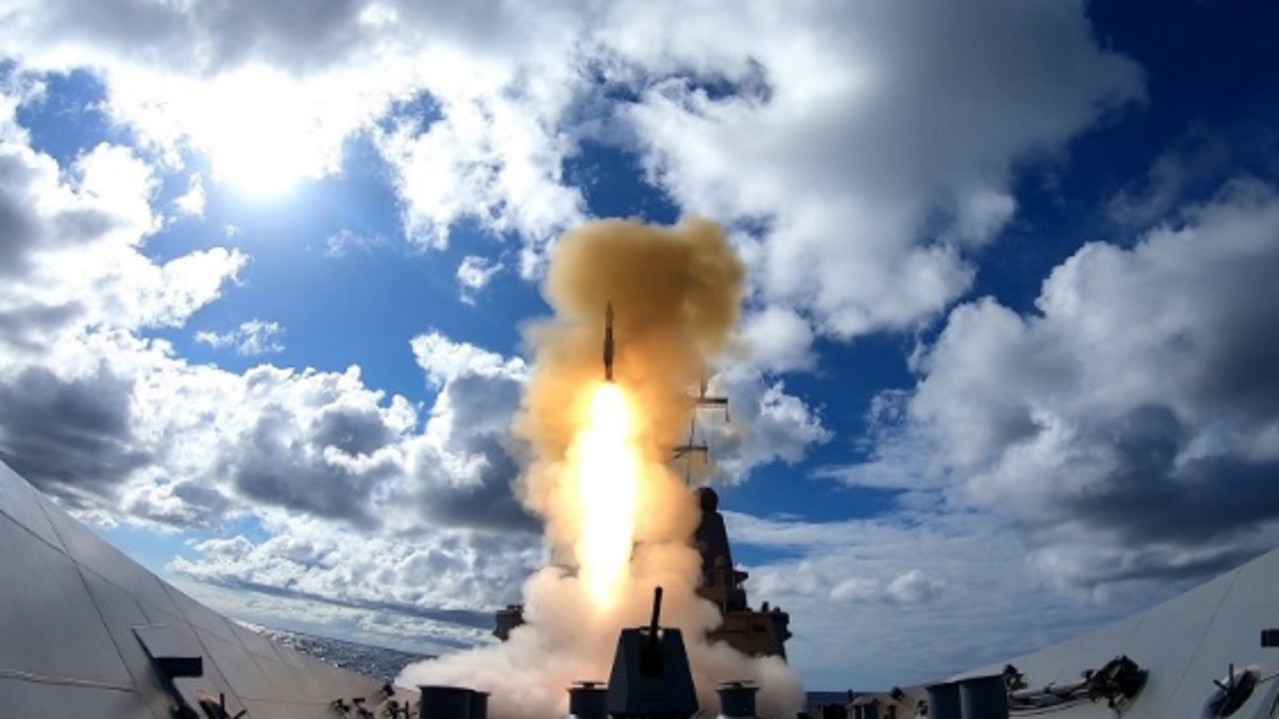
And that’s because the US has long since lost its monopoly on long-range precision weapons.
“The uncomfortable truth is that the US Joint Force is currently ill-prepared for the kind of high-intensity deterrence and warfighting tasks that would characterise a confrontation with China,” the University of Sydney report concludes.
But Dr Farley says the state of affairs remains too close to call a clear victor.
“We don’t know how well Chinese anti-ship ballistic missiles will function, or how destructive US cyber-attacks against the PLAN will prove, or how dangerous the F-22 Raptor will be to conventional Chinese fighters, or how effectively the different elements of the PLAN will co-operate in actual combat,” he said.
“Finally, we don’t know when the war will start; both the PLA and the US military will look much different in 2020 than they do in 2024.”
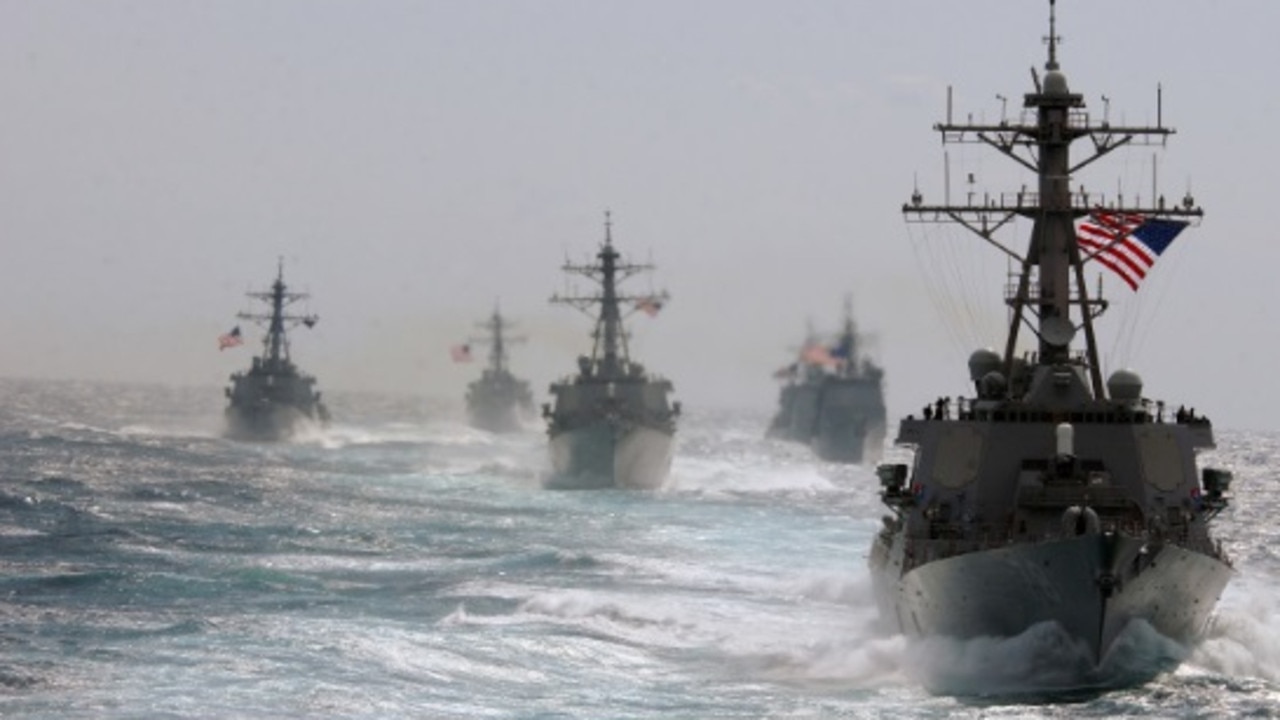
SITTING DUCKS
“The biggest moment will come when the PLA makes an overt attack against a US aircraft carrier,” Dr Farley writes.
Such a strike would be a shocking but clear signal.
There would be no going back.
Attacking such a metal behemoth would immediately escalate an international crisis outside the realm of political and military posturing into open conflict. But how far would the US be willing to take the fight?
“The sinking of a warship would likely result in the greatest loss of life of any single action for the US military in action since the Vietnam War,” Dr Farley notes.
But such a strike may not itself lead to all-out war.
“The means for this attack matters. An attack launched from a ship or a submarine makes any PLAN military vessel fair game for the United States, but doesn’t necessarily incur US attacks against PLAAF air bases, missile installations, or even naval installations.”
Instead, all-out war would result from the use of ballistic “carrier killer” missiles.
“This is true not simply because these missiles are difficult to intercept, but also because such missiles could carry nuclear warheads.”
Under such circumstances, preventing the war from turning nuclear would be difficult, he writes. But even without the use of doomsday weapons, the death toll would be horrific.
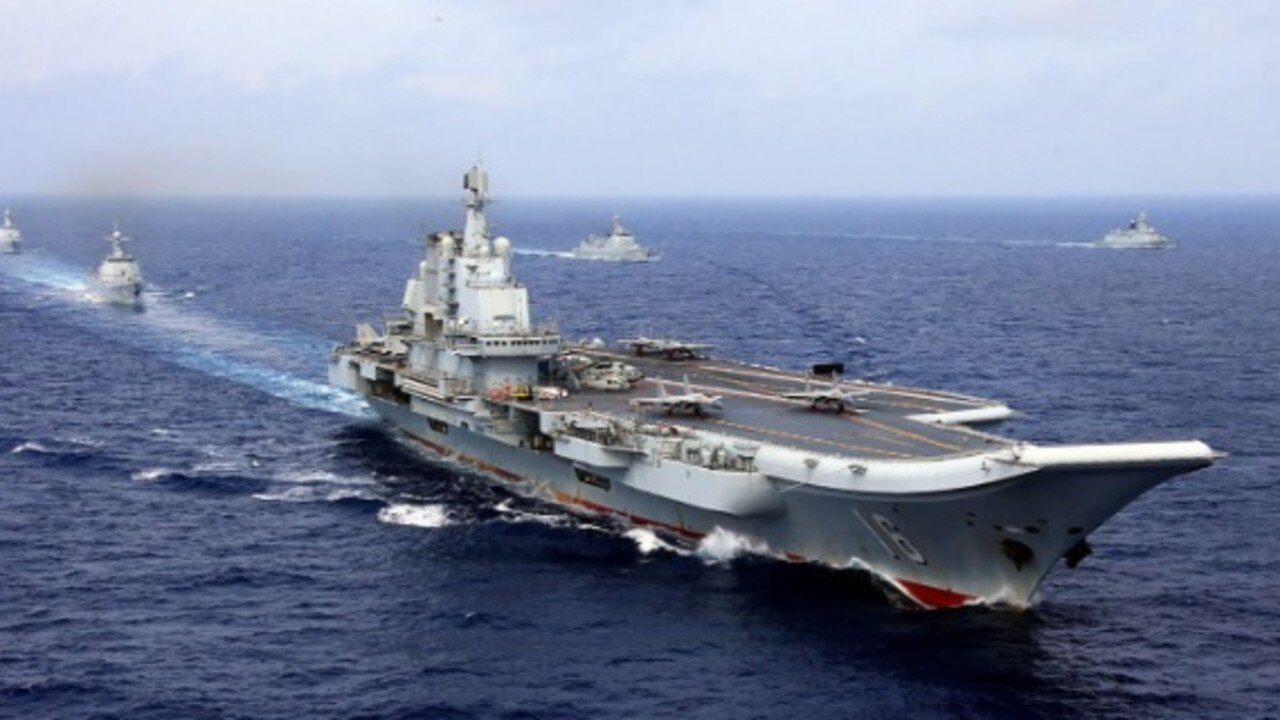
UNLEVEL PLAYING FIELD
A growing number of international affairs analysts warn the West can no longer rely on a technological edge to deter aggression in Asia.
“China has made strides in developing new classes of munitions that the United States has abrogated since the end of the Cold War,” the University of Sydney’s Averting Crisis: American Strategy, Military Spending and Collective Defence in the Indo-Pacific warns. “American naval vessels do not have the strike power needed to confront warships in the open sea, while the air force lacks stealthy, long-range missiles for land, air and maritime strike role.”
It argues China will use “anti-access and area denial (A2/AD) tactics, enforced by its overwhelming and interlocking networks of missiles, to shield aggressive acts.
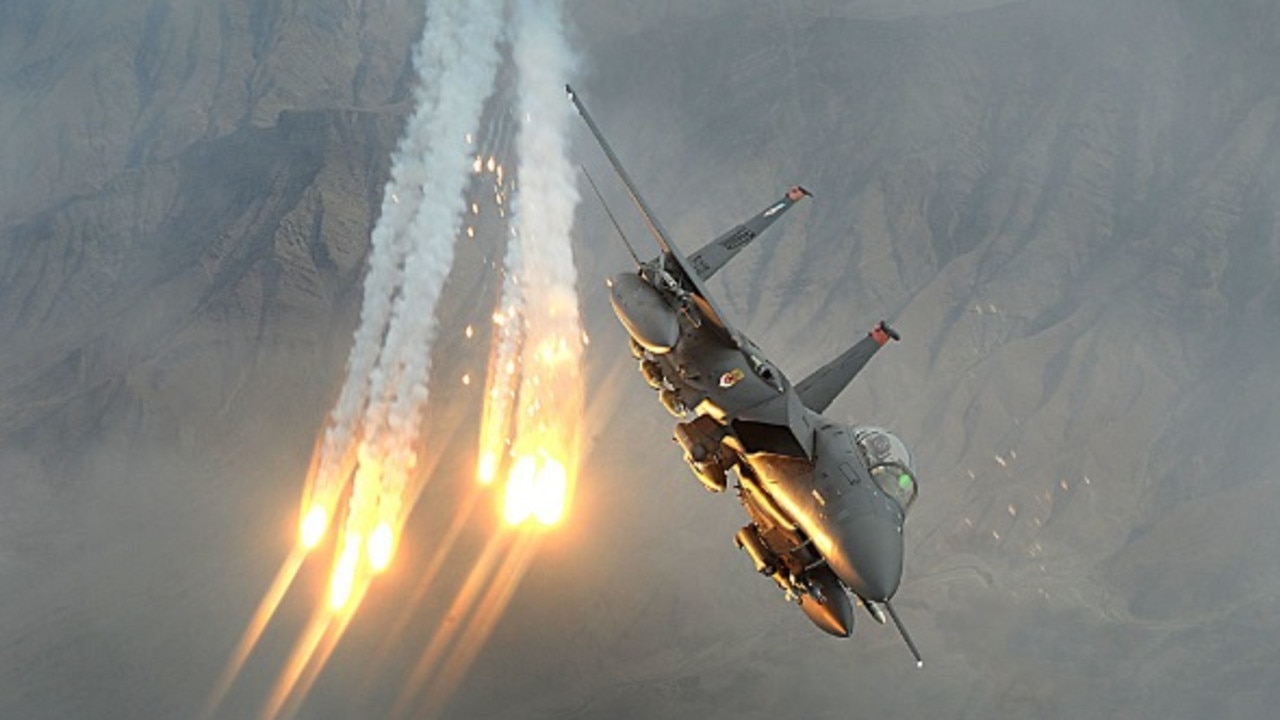
“Under the cover of these A2/AD bubbles, Beijing could launch a quick, limited war to seize politically or strategically valuable territories — such as features in the Ryukyu Islands archipelago or, in a worst-case scenario, Taiwan. Its aim would be to strike first and secure territory before the US and its allies could mobilise to respond.”
The Sydney University think tank believes Beijing already can do this.
“China could now render most American and allied military bases in the region inoperable under co-ordinated missile salvos. US reinforcements outside the range of China’s counter-intervention systems would take significant time to arrive and would first have to fight their way back into the highly contested region.”
Such a scenario would put all the cards in Beijing’s hands.
Like Japan in World War II, China will aim to inflict dramatic losses on US forces in the hope that its leadership will hesitate to respond. Why shed US blood in another nation’s war?
Such an attitude, as already demonstrated in Syria and Afghanistan, could cause its regional alliance to deteriorate and collapse.
HELL ON HIGH WATER
China would likely be unwilling to send its navy into action outside the umbrella of its South China Sea fortresses, Dr Farley writes. US and allied submarines would pose too high a threat.
“Indeed, even hiding in port probably won’t prevent attacks on the PLAN’s largest ships, including the carrier Liaoning and the big new amphibious transport docks,” he says.
China, likewise, will likely have its secretive submarines at sea before open conflict is declared.
And these silent wolves have the potential to wreak havoc upon the region’s economies.
With more cargo loaded on fewer, but bigger, ships, every loss will be a catastrophe.
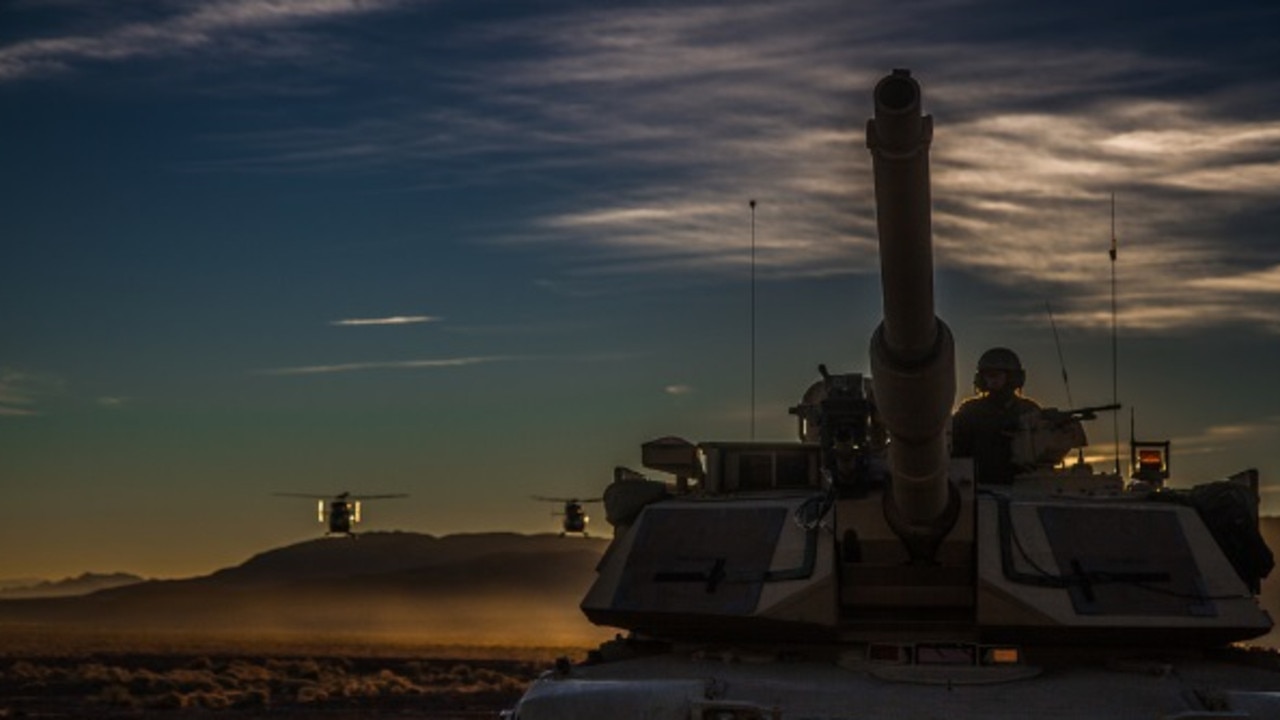
“The Navy has been candid enough with Military Sealift Command and me that they will probably not have enough ships to escort us. It’s: ‘You’re on your own; go fast, stay quiet’,” retired rear admiral Mark Buzby told Defence News about a recent merchant marine review.
The challenge for the West, in almost every theatre, is range.
China’s missiles significantly outreach and outnumber those found on US, Australian and Japanese aircraft and ships. The F-35 Strike Fighter is reliant on the survival of tanker aircraft to get it close to its targets, while China’s fighters are designed to roam great distances.
Meanwhile, Beijing has also established crucial stepping stones to help extend the arm of its military: the artificial island fortresses of the South China Sea. In effect, these heavily defended airfields enable Chinese fighters and bombers such as the H6K to fly an extra 1500km.
“Chinese long-range bombers if staging through the islands is certainly an issue,” Griffith Asia Institute military analyst Peter Layton, recently told CNN. “That would allow air-launched cruise missile strikes into northern Australia airfields and ports, (placing) any USAF bombers and tankers deployed there at risk.”
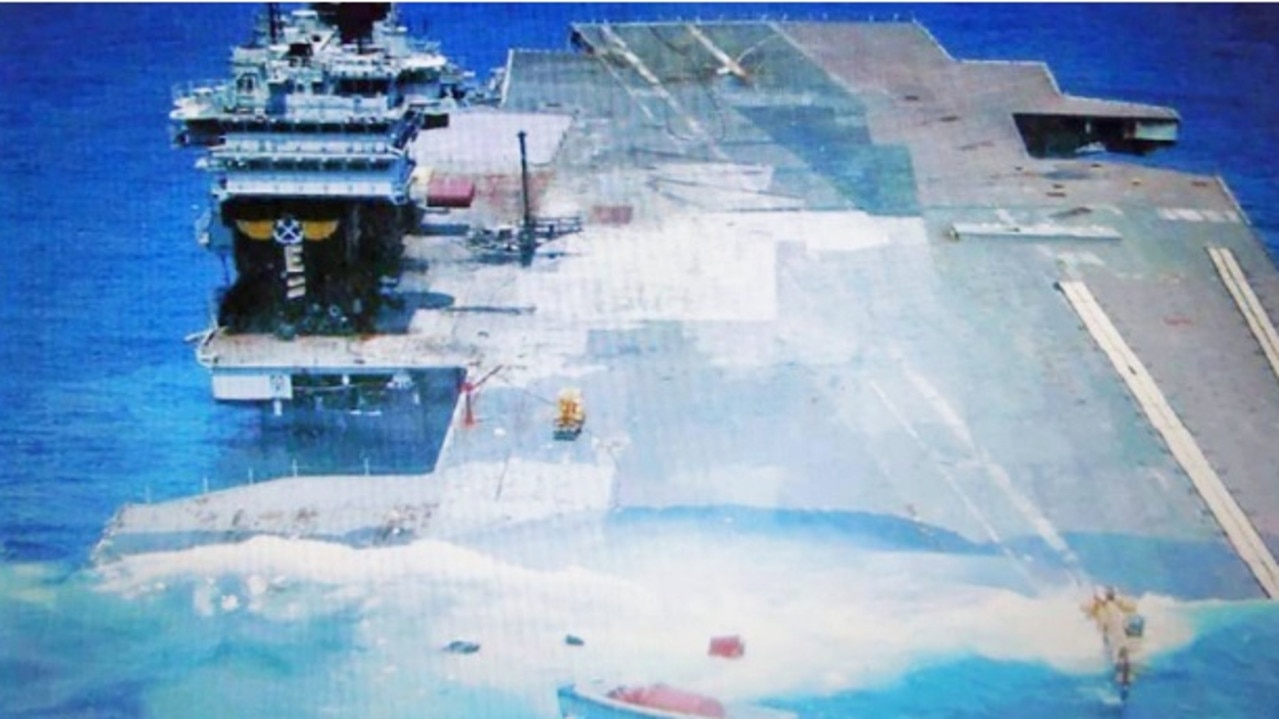
That means facilities long thought to be safely out of reach — such as RAAF Base Tindal, near Darwin — must now be prepared to face a “sophisticated threat”.
It’s an even more significant challenge for US and allied forces racing to assist the likes of the Philippines, Taiwan or Japan.
KNOWN UNKNOWNS
War-games conducted by RAND reveal the tactics China has been practising have real impact.
Their simulated attacks manage to shut down opposition command and communications networks so effectively that nothing works and nothing gets done.
“(They) attack the American battle network at all levels, relentlessly, and they practice it all the time,” says former US secretary of defence Robert Work. “Whenever we have an exercise and the red force destroys our command and control, we stop the exercise …”
Which, essentially, means defeat.
It’s a tactic the Chinese call “System Destruction Warfare” — where assaults on every aspect of an opponent’s operations cause its will to fight to evaporate.
It will be a war fought like no other. It would be fast. It would be brutal.
And analysts say the winner would need to dominate in four key areas.
Electronic warfare: Who gets the best intelligence, fastest, while preventing their opponent from doing so.
Missile defence: Whose missiles can best break through the defences of a base or a ship?
Force co-ordination: Will all elements of inherently political militaries co-operate well enough, fast enough, to achieve necessary objectives?
Quality v Quantity: Are mere handfuls of ultra-expensive aircraft and jets sufficiently capable of countering wave after wave of cheaper opponents?
OUTCOMES
“China can claim victory by forcing the United States into an accommodation,” Dr Farley writes. This would likely shatter its alliance with the likes of South Korea, Japan, Taiwan, the Philippines and Australia.
“The best-case scenario for an American victory would be a result akin to the collapse of the Imperial German government at the end of World War I, or the collapse of (former Argentinian president) Leopoldo Galtieri’s military government after the Falklands conflict.”
But it gets worse.
“Tragically, a conflict between China and the US might be remembered only as ‘The First Sino-American War’,” he writes.
Once the shooting war was over, the conflict would have only just begun.
China’s enormous economy would be able to rebuild quickly. The US, however, was less likely to rebound.
And both sides would be asking the same questions: “Was it worth it? What’s next?”
“In victory or defeat, the US will suffer substantial military and economic damage,” Dr Farley says. ”Even if the US wins, it will not solve the problem of China. Even in the unlikely event that the CCP collapses, a successor regime will still dispute China’s littoral (territory).”
And that, warns the University of Sydney, is the core of the problem.
“America may ultimately wager that military intervention and escalation to liberate seized territory is too costly,” its report reads.
This means Washington needs all the support its allies can give.
“A regional strategy of collective defence is fast becoming necessary to hold the line against rising Chinese strength.”



